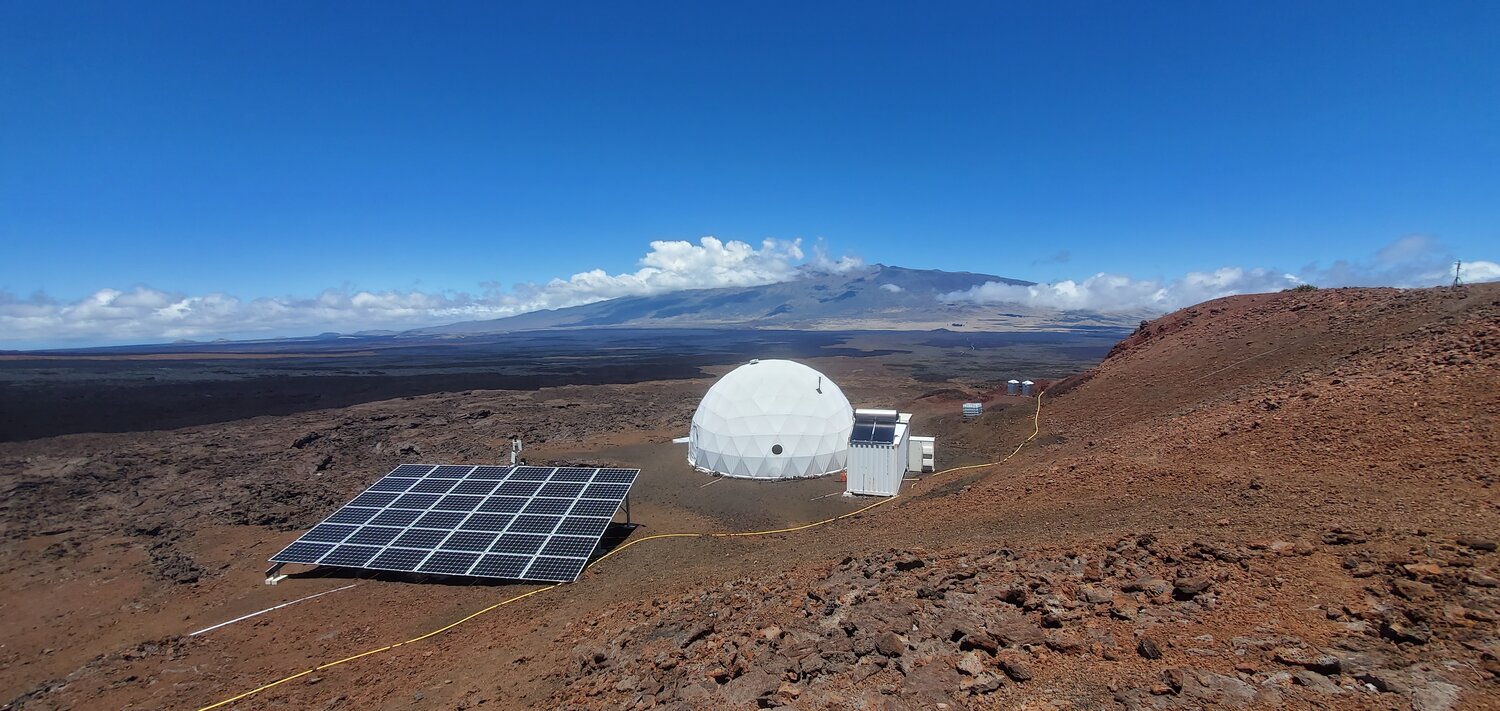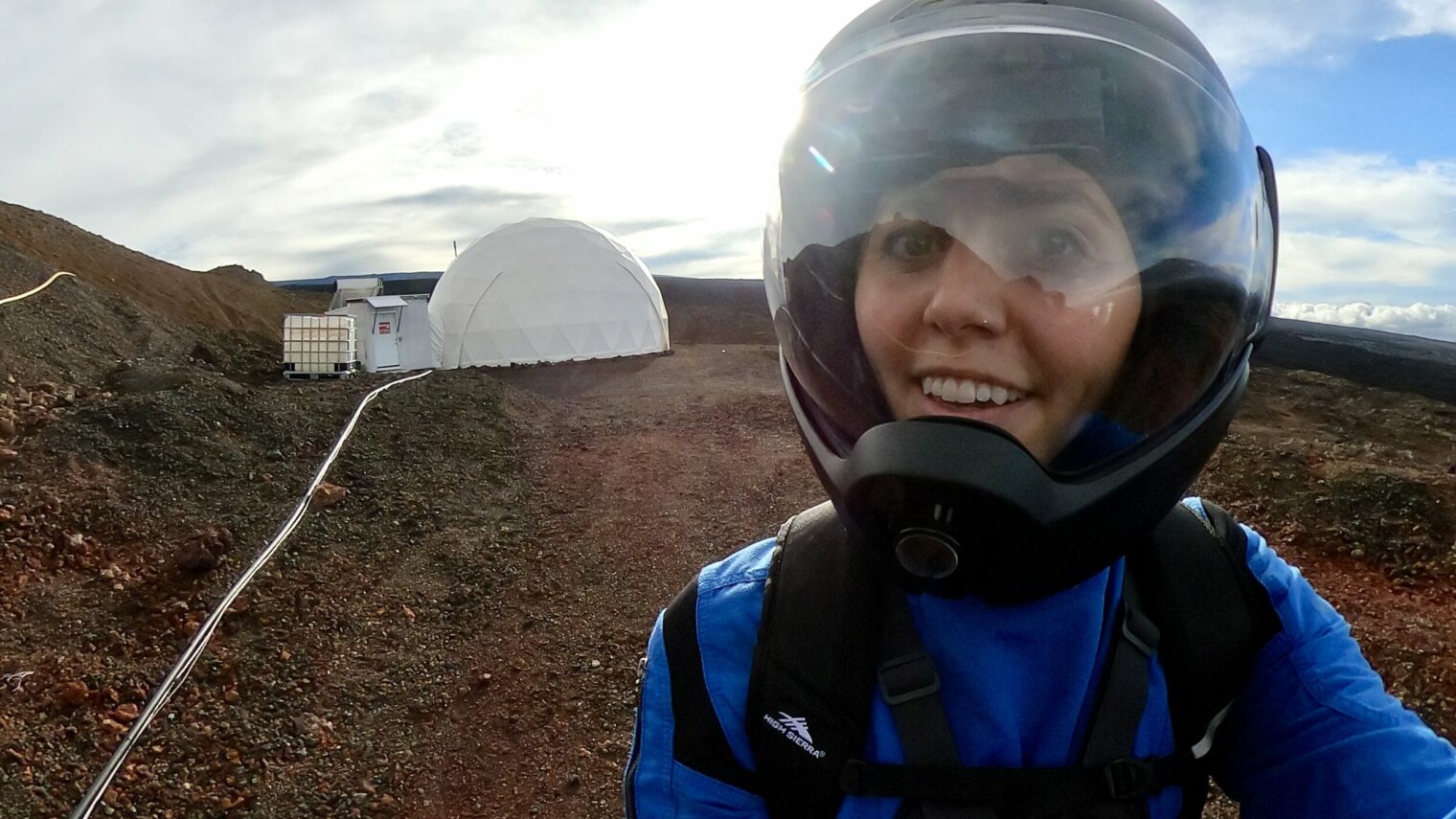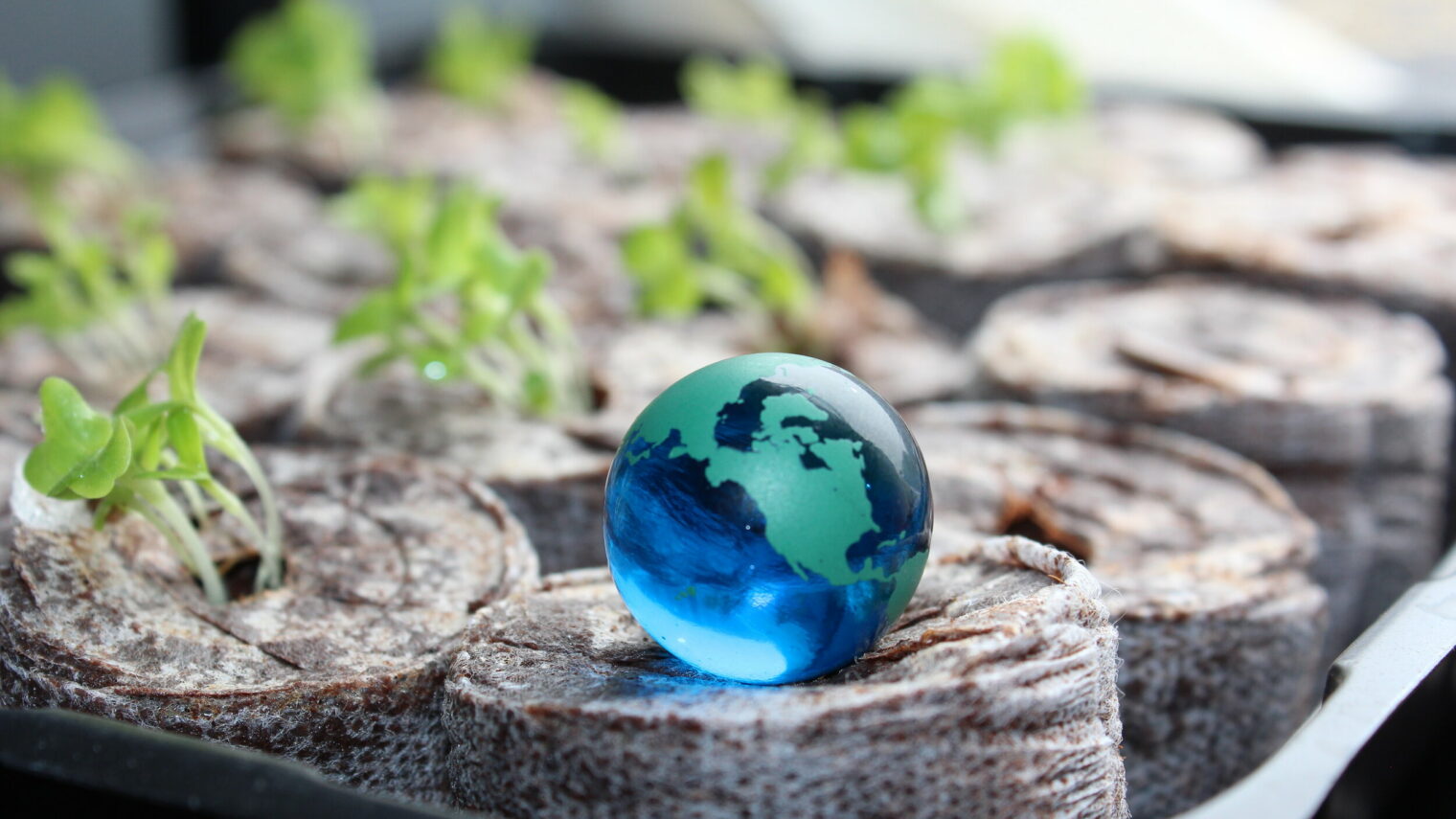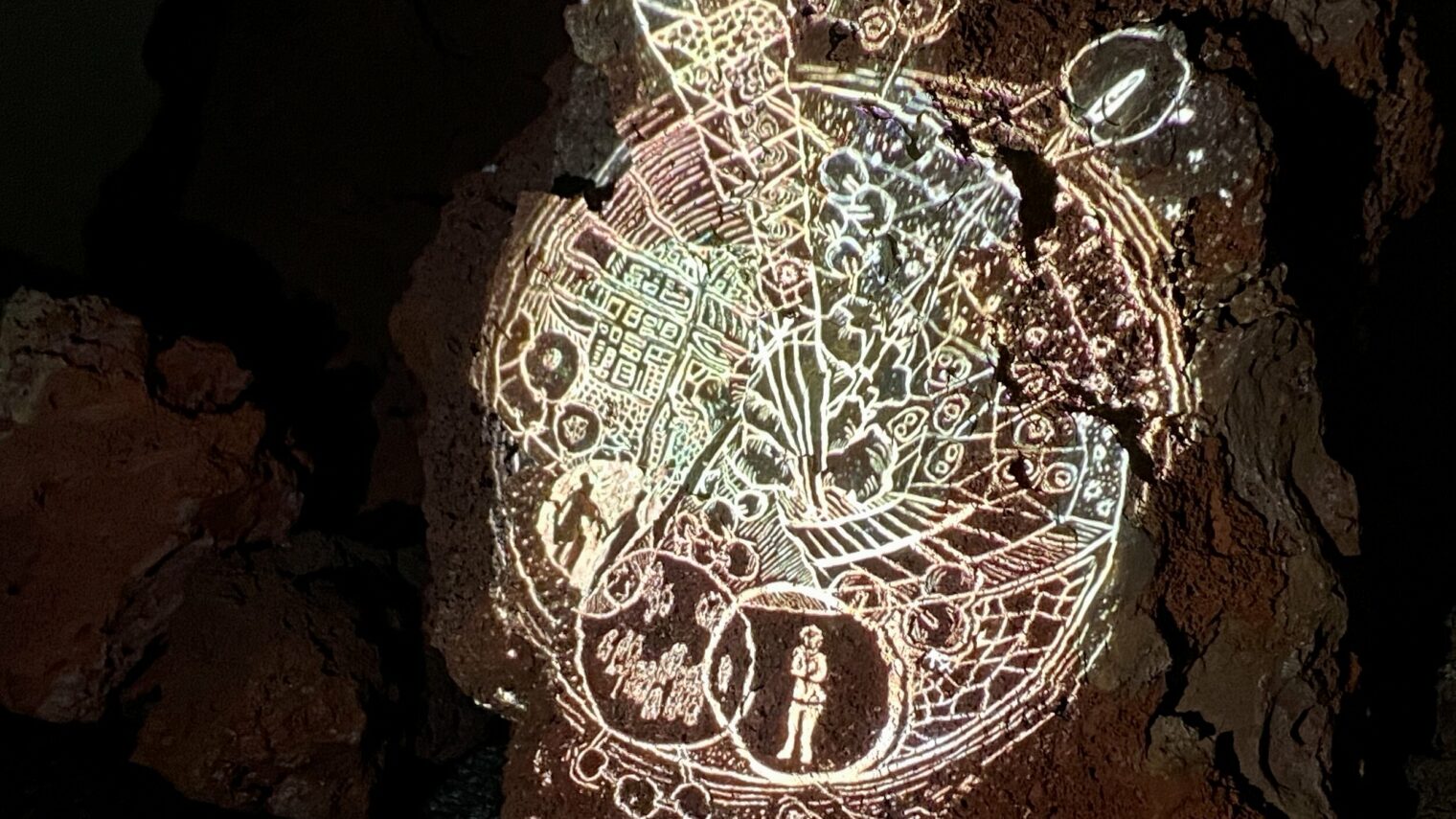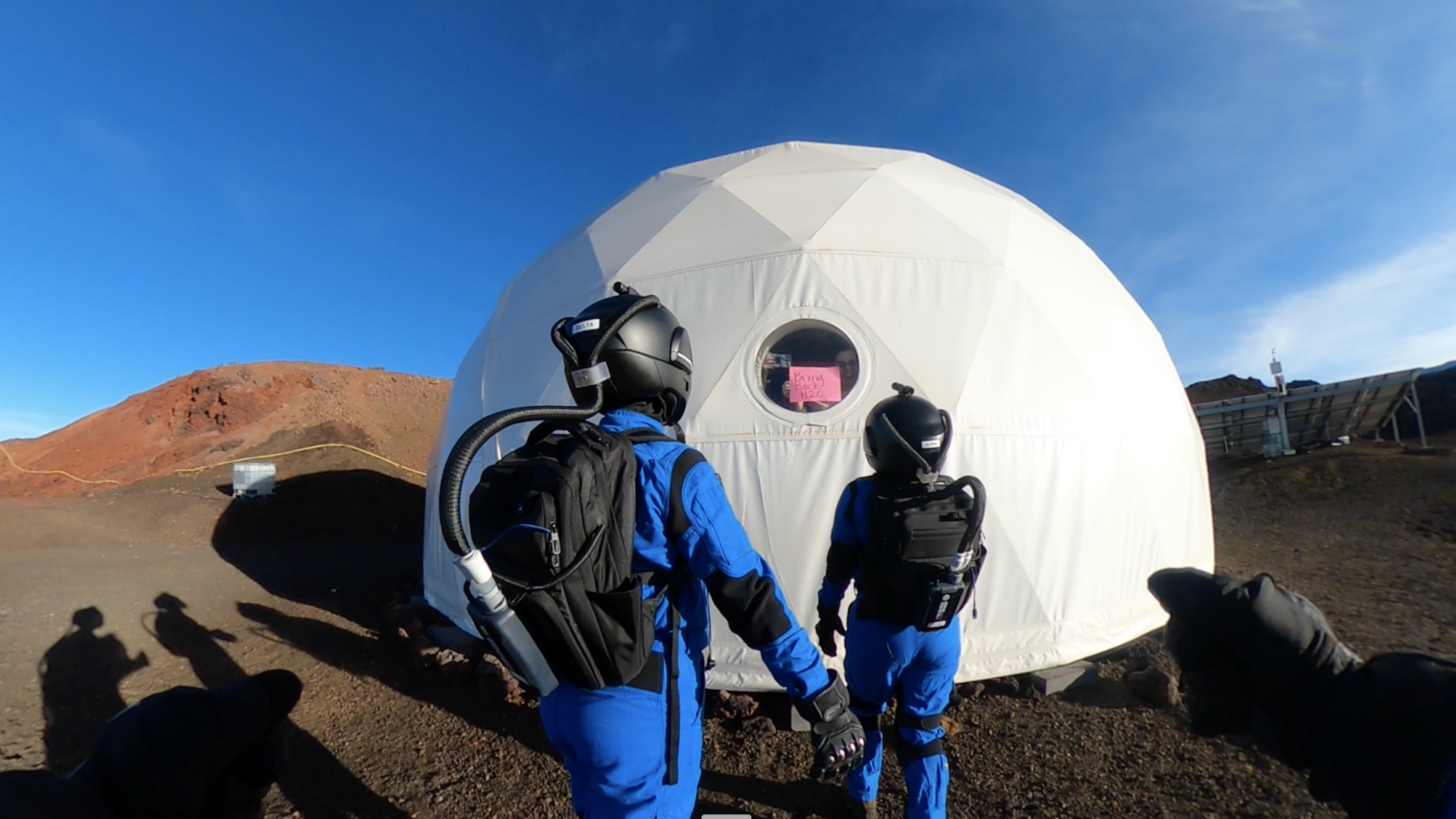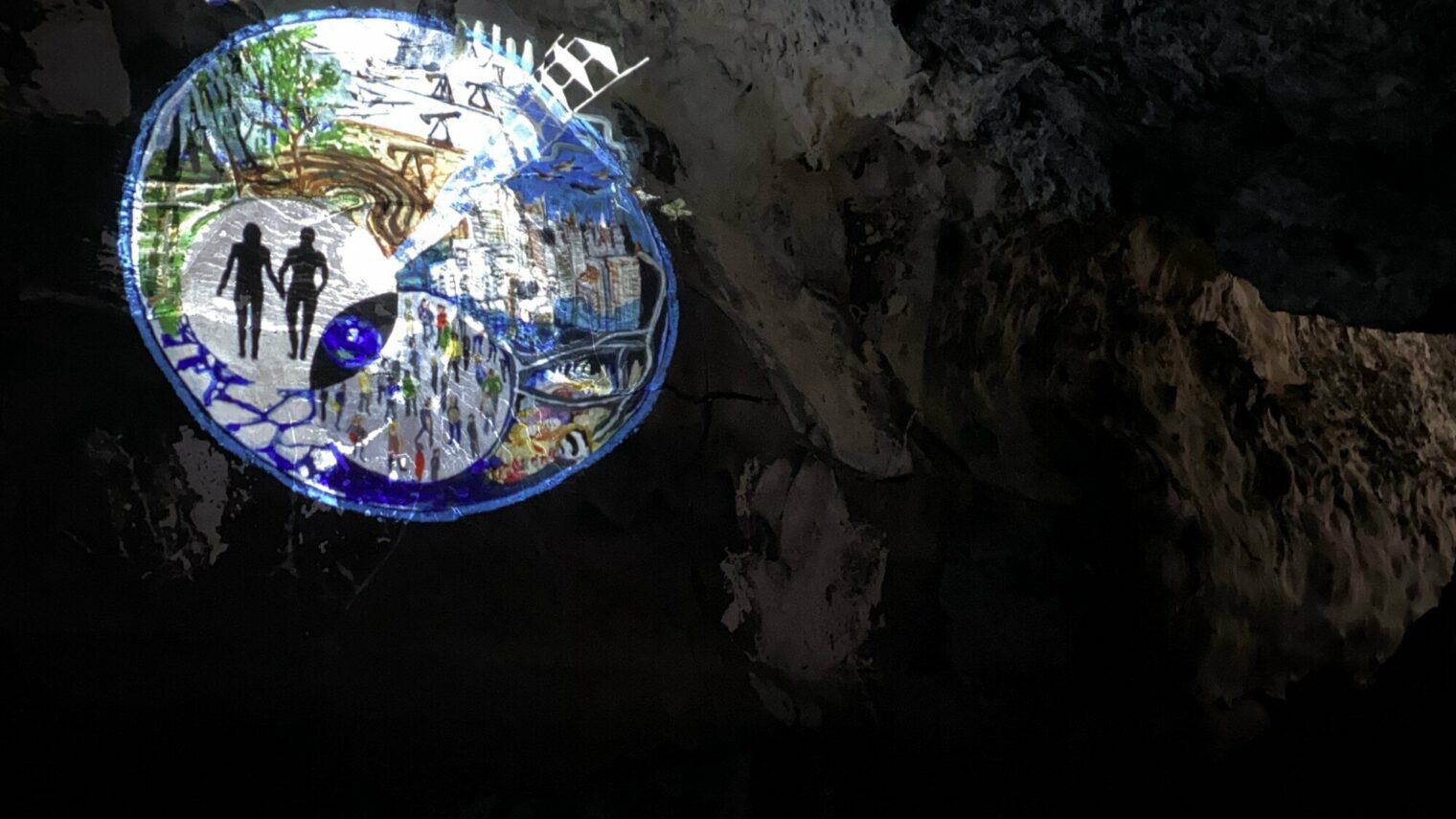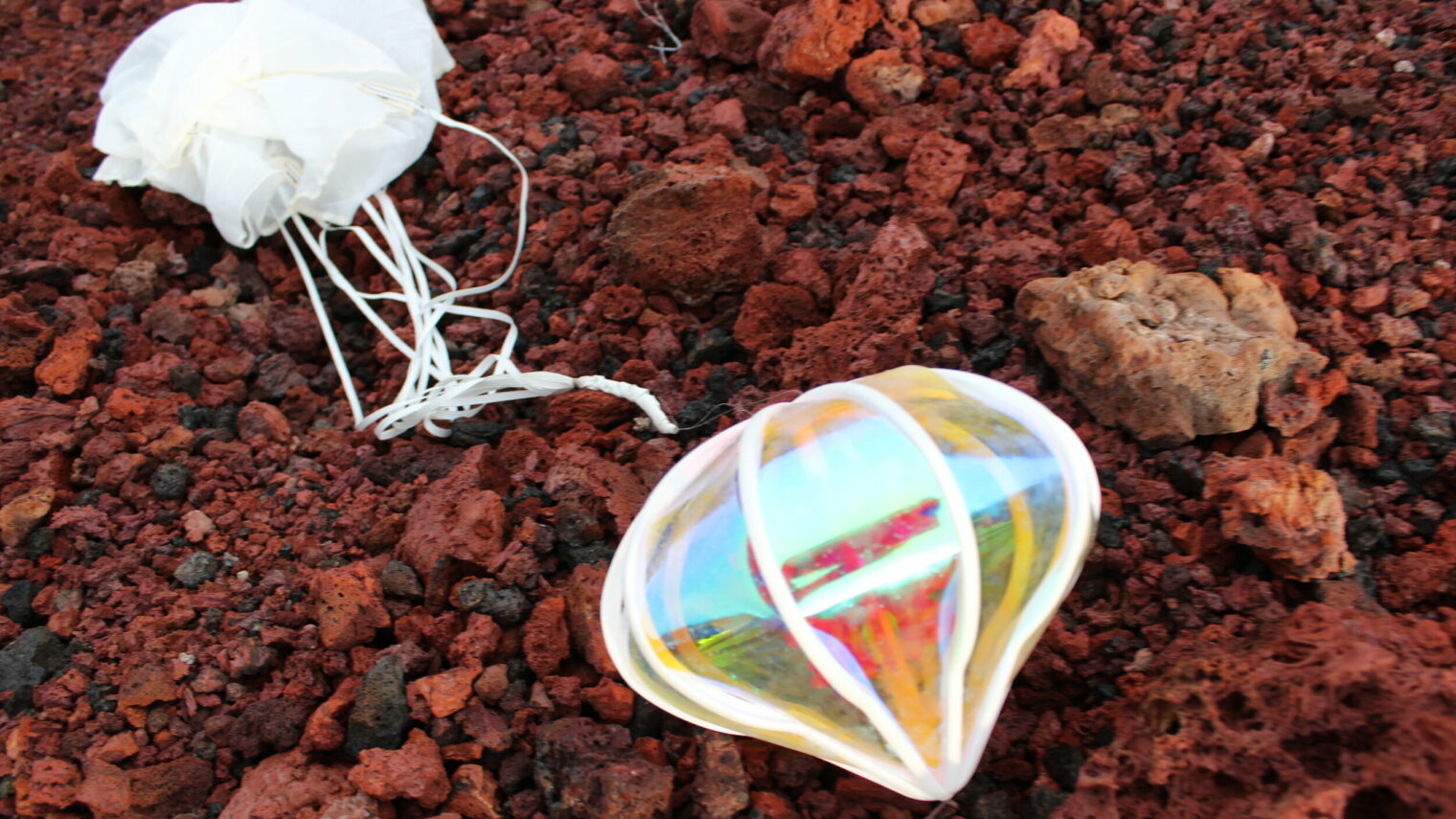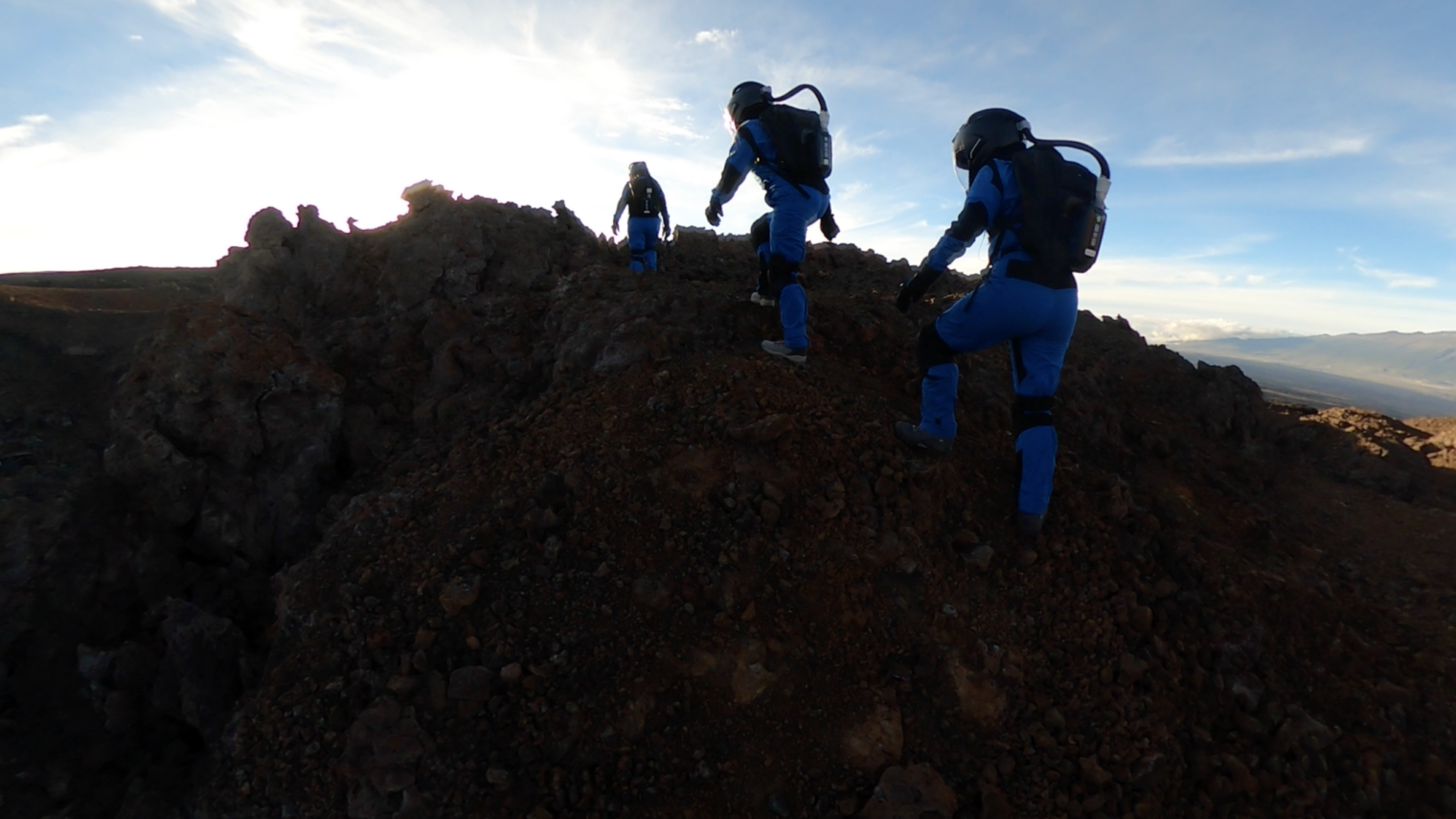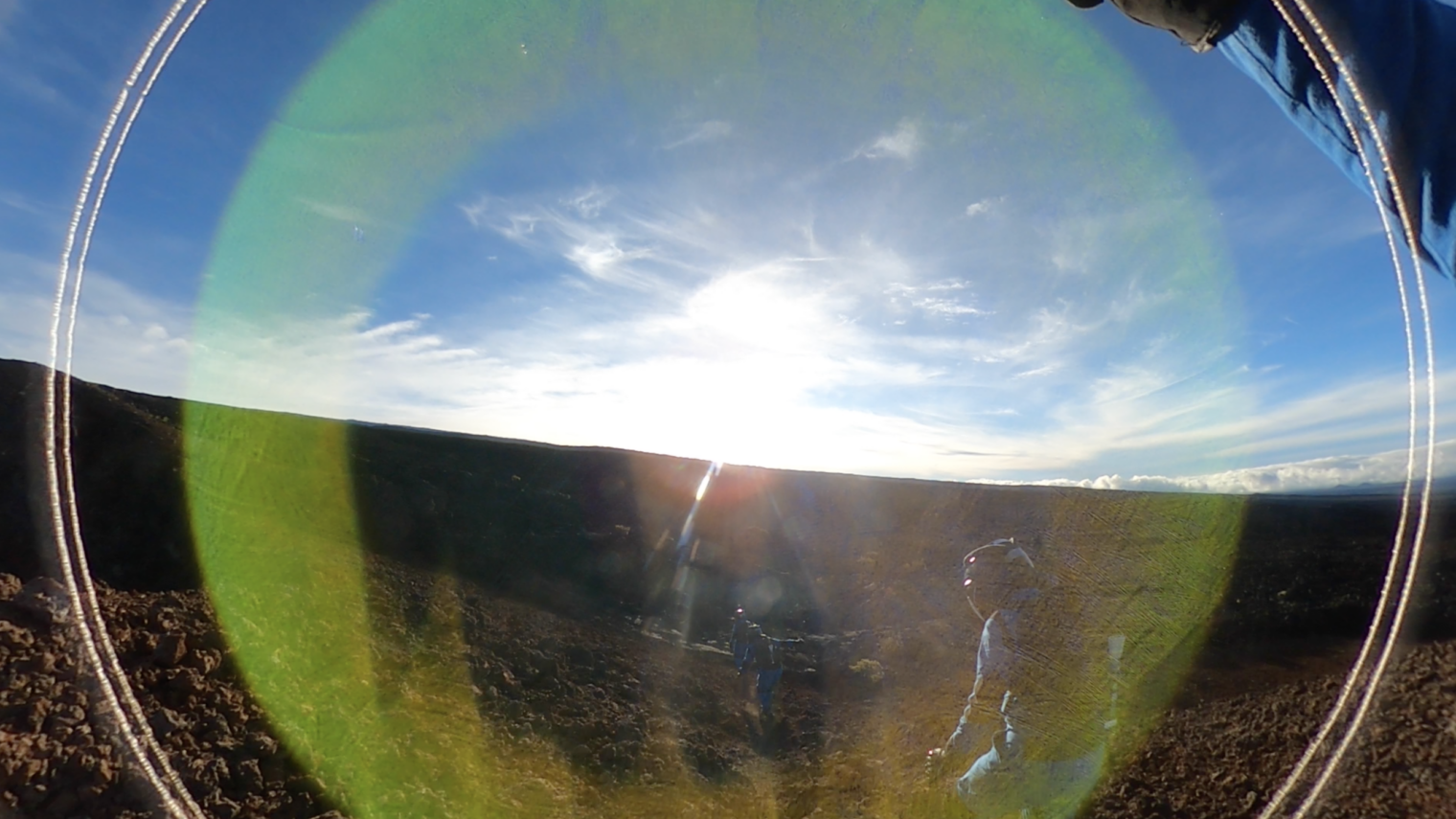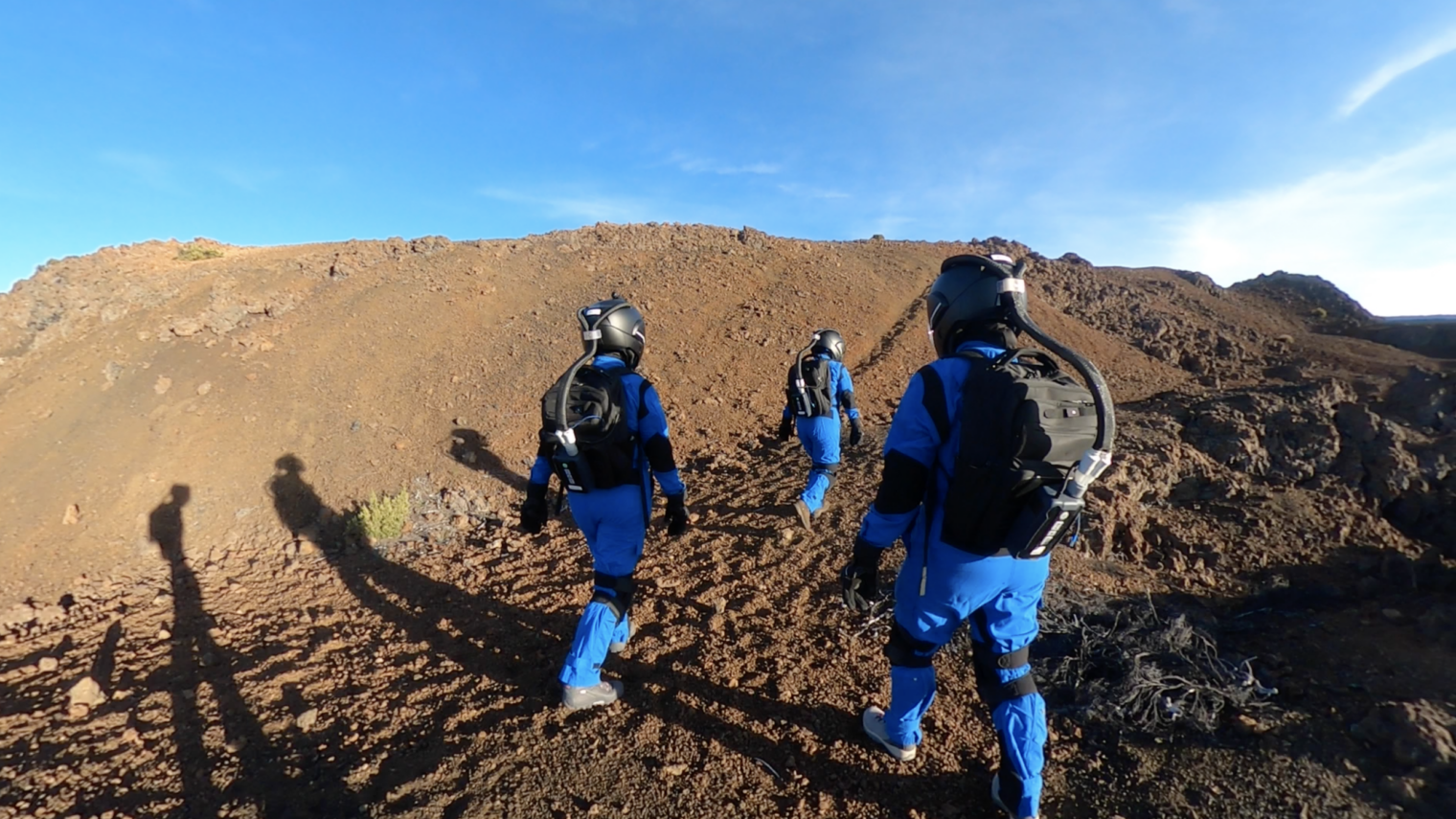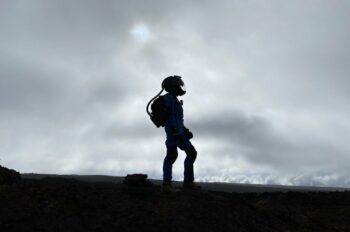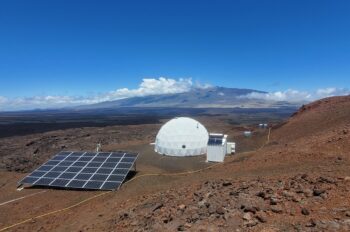When I first stepped foot on the Martian soil, I knew I had to record this moment in art. Just as Neil Armstrong and Buzz Aldrin took the first steps on the Moon, footprints from our all-female crew patterned the areas surrounding the Habitat. It was a meaningful moment to take those first steps and consider what trail we will leave behind.
After only a couple days into our mission, I set out a trail of “Eco-Footprints” that traced my path during my first Extravehicular Activity (EVA). Each print alludes to the decisions we make when navigating the space frontier — do we choose to explore or exploit? From grassy imprints that terraform the Martian soil to polluted trash-filled prints that scar the red planet, it’s up to us to choose what trail we leave behind.
When I learned that some of the first settlements off-planet are likely to be in caves on the Moon and Mars, my first thought was: what will be the Cave Paintings of the 21st Century? What a beautiful story of our evolution where we venture to new planets and return to our primitive origins in the caves. How do we share the stories of our journey? How do we tell the tale of seeing Earth from space? And how do we extend the narrative of ourselves?
I created several new artworks projected onto cave walls within deep lava tubes in the Martian terrain. Images referenced migration, the Overview Effect, global networks, biodiversity, and extension beyond Earth. Similar to Plato’s Cave, I photographed the shadows we cast on the cave walls, asking how do these shadows illuminate aspects of our identity, our reality?
Making art in the space frontier provided a way to contemplate and interpret new feelings and insights and open new forms of communication and connection with crew mates. We use art as a vehicle to ask ourselves who are we, where did we come from, and what are we becoming?
Like any story of a new frontier, the souvenirs told the story of expedition. I wanted to think of ways to bring back a piece of Mars without adding extra weight to our payload and — more importantly — without disrupting and extracting from the pristine environment.
